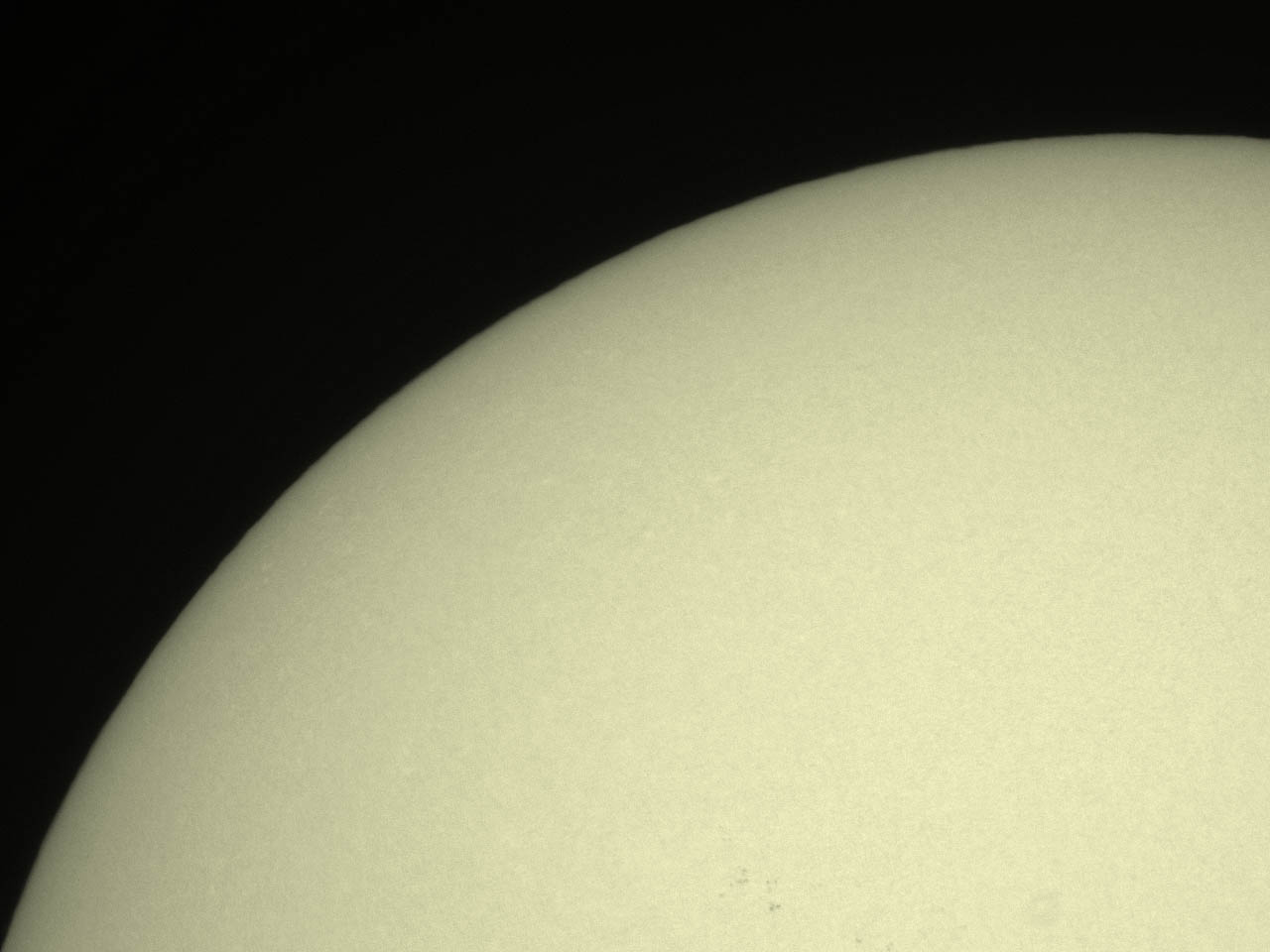
I
observed the 2004 transit of Venus from Pasagard at the Tomb of
Cyrus, In Iran. There, I made images using a webcam mounted
on a 1000 mm f/10 Maksutov telephoto. Unfortunately, the seeing
was terrible, and my images turned out rather mushy. Still, it
was
an incredibly marvelous trip and resulted in long-lasting
friendships.
For
the 2012 transit, I observed from my observatory in Oregon, where
the weather prospects were poor. However, my hope was to
image the atmospheric ring of light around Venus as the planet
moved onto the solar disk. This occurs between first and second
contact,
and because the illuminated ring is on the order of 1 second of
arc wide, sucessful imaging requires good optics, sharp focus,
and
images that are diffraction limited or as nearly so as possible.
Of my telescopes, I chose a 6-inch f/8 Newtonian with a excellent
mirror and small secondary, and constructed a solar filter using
Baader solar filter material with a density of 3.8. The idea was
to
have lots of light so that exposure could be short, and to take
images with a high cadence (one frame every two seconds) that
I would be able tocombine multiple images using stacking software
such as Registax.
Unfortunately,
just 14 minutes before first contact, a big thunderstorm blocked
the Sun, and it began it rain heavily. I was
forced to roll the roof of my observing on, but not before things
got a little wet. Fortunately, I was able to blot the raindrops
off the solar filter without damaging it. Fourteen minutes after
second contact, the clouds thinned and soon the Sun was
shining from a clear, blue sky. During the rest of the afternoon,
clouds and rain alternated with clear blue sky, but I did
obtain over 850 images that show the transit quite nicely.
Predicted Times
First
Contact: 15:06:10 PDT (altitude 60 degrees)
Seond Contact: 15:23:36
Mid-transit: 18:27:04 PDT
Third Contact: 21:30:09 PDT (after sunset)
Fourth Contact: 21:47:58 PDT (after sunset)

Image #0170, 14-52-02 PDT Before first contact.
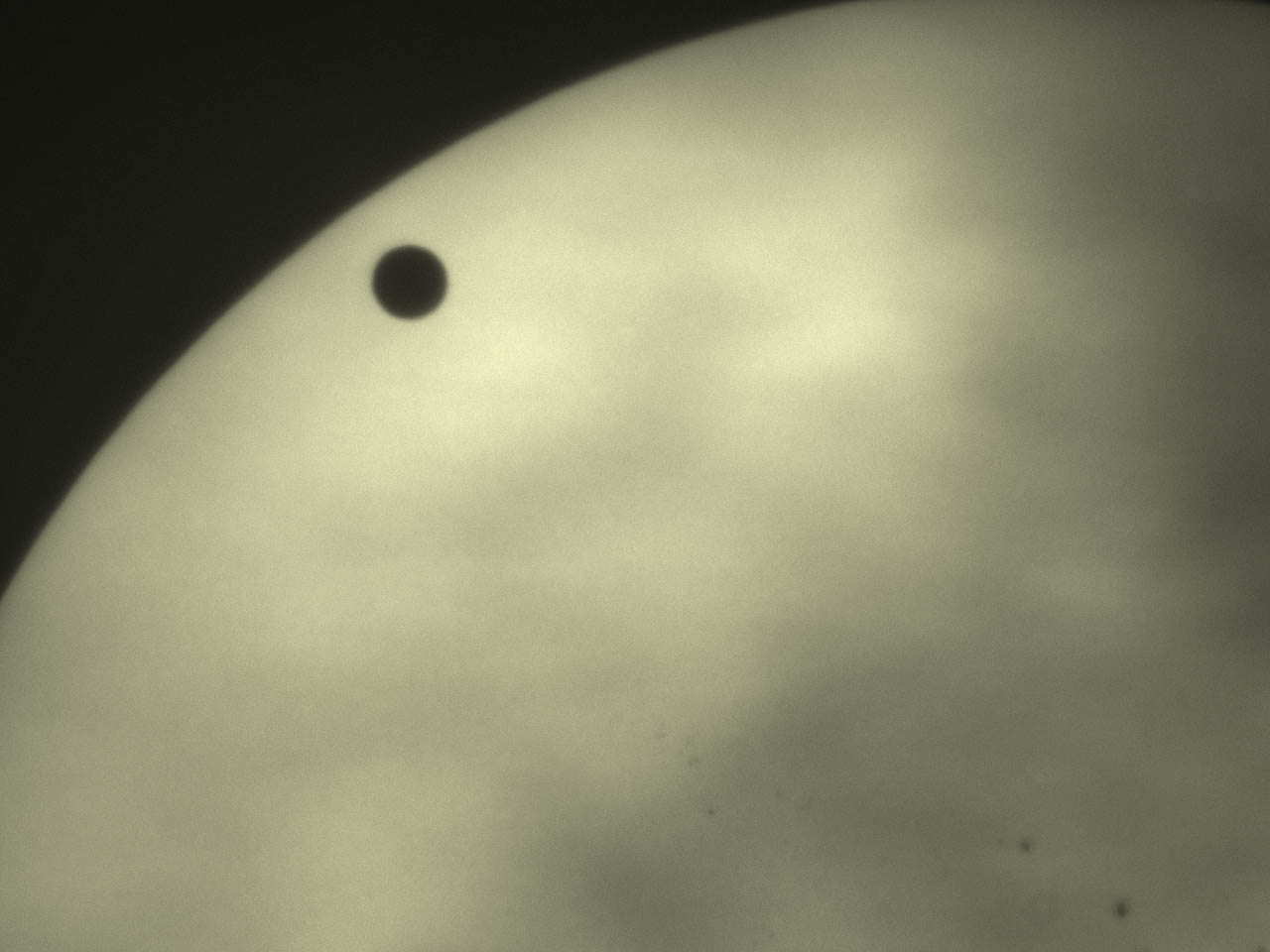
Image #0228, 15-37-19 PDT: First image after the clouds moved off the Sun.
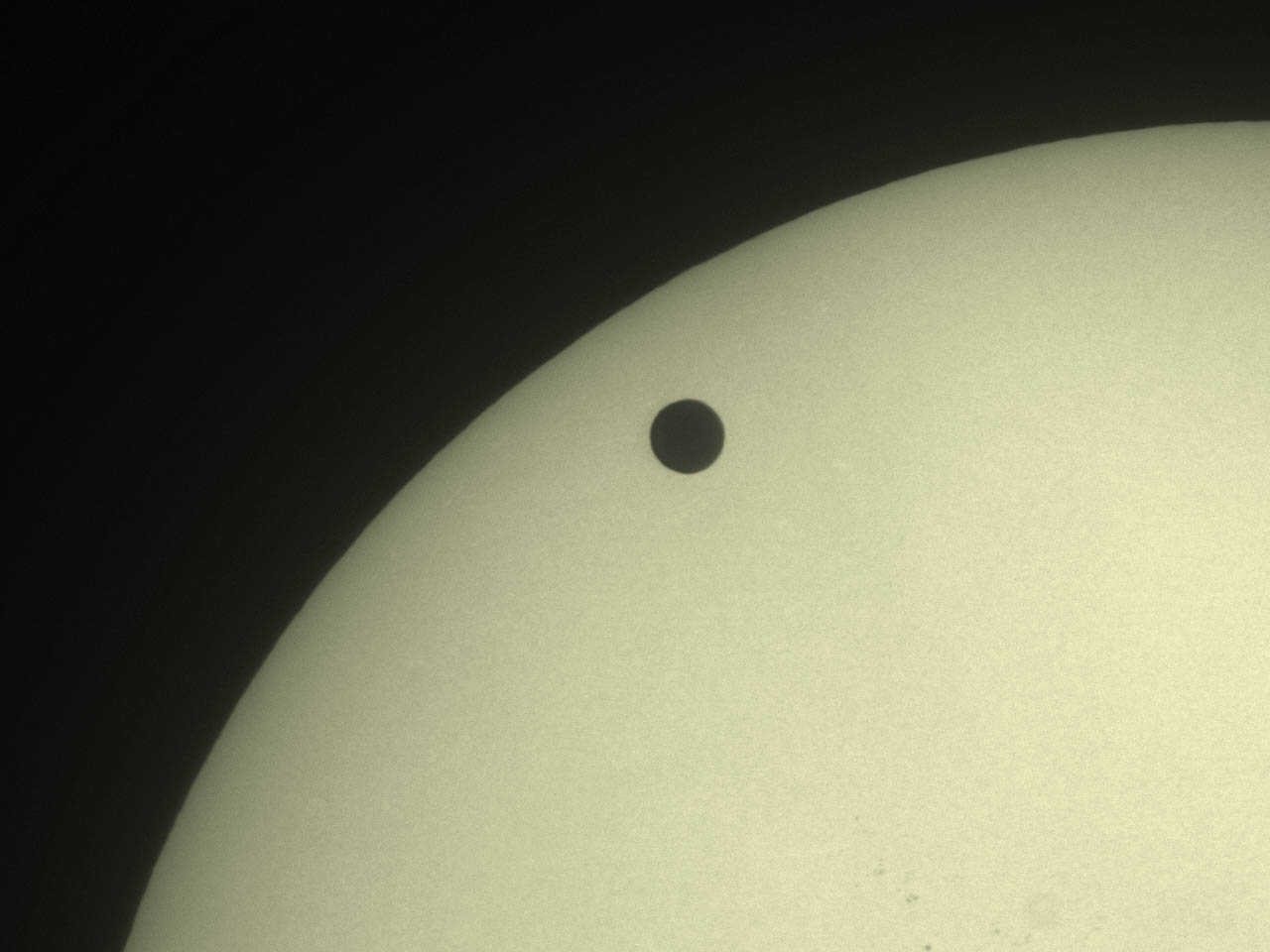
image #0304, 15-49-23 PDT Clear blue sky and pretty good seeing.
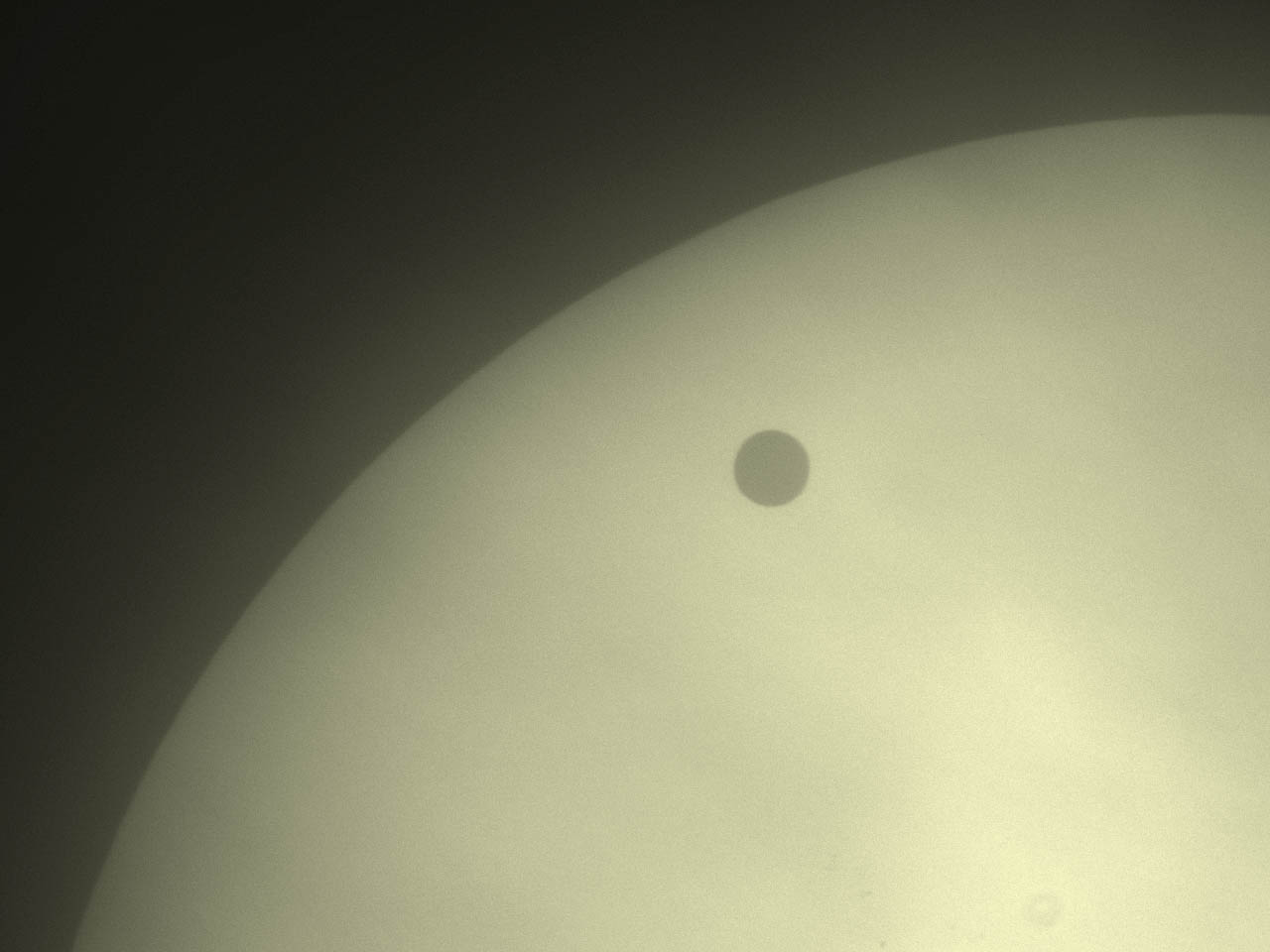
Image #0348, 16-16-32 PST Through thin, cirrusy clouds.
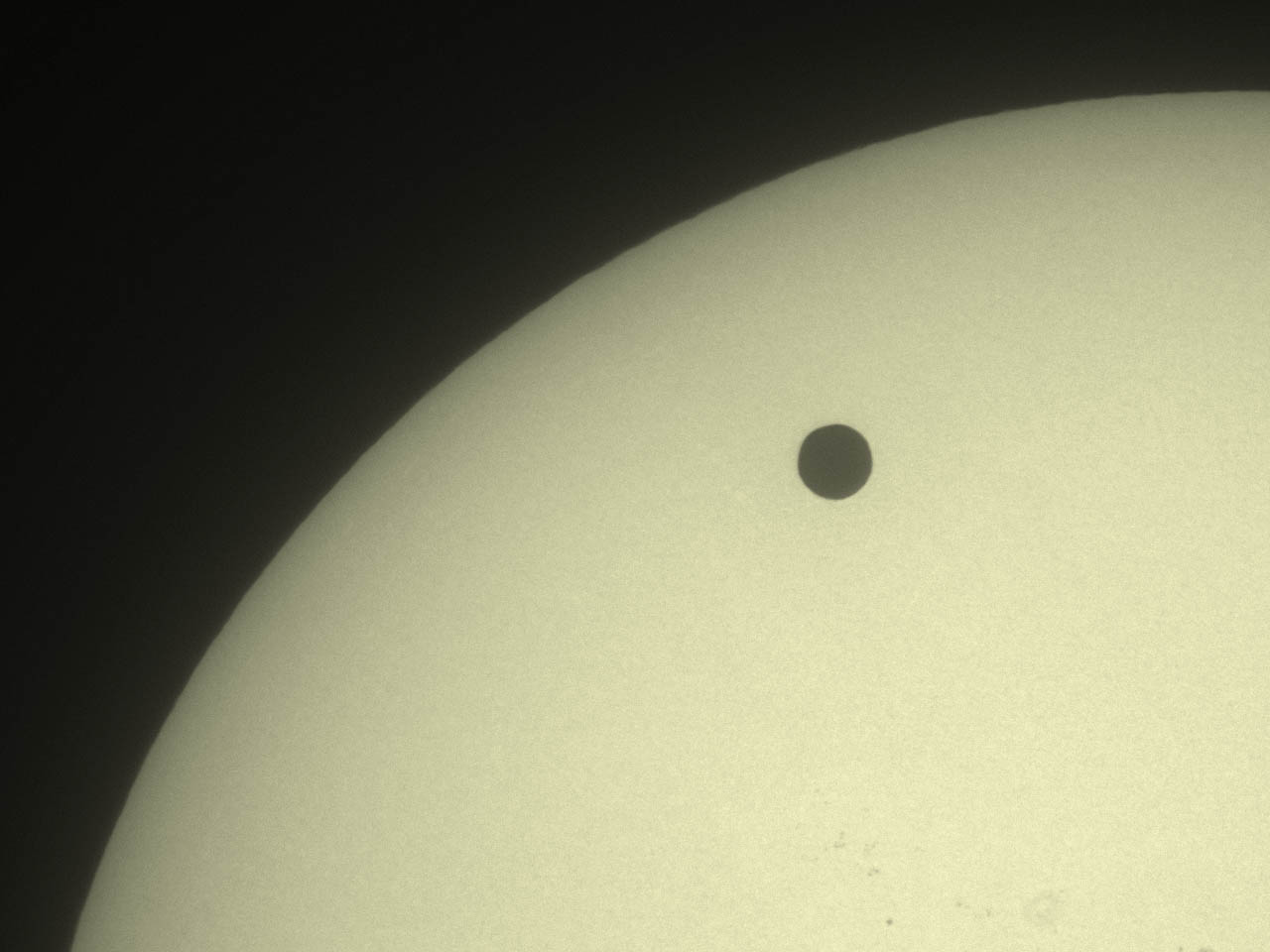
Image #0419, 16-28-10 PST Venus marches slowly across the solar disk.
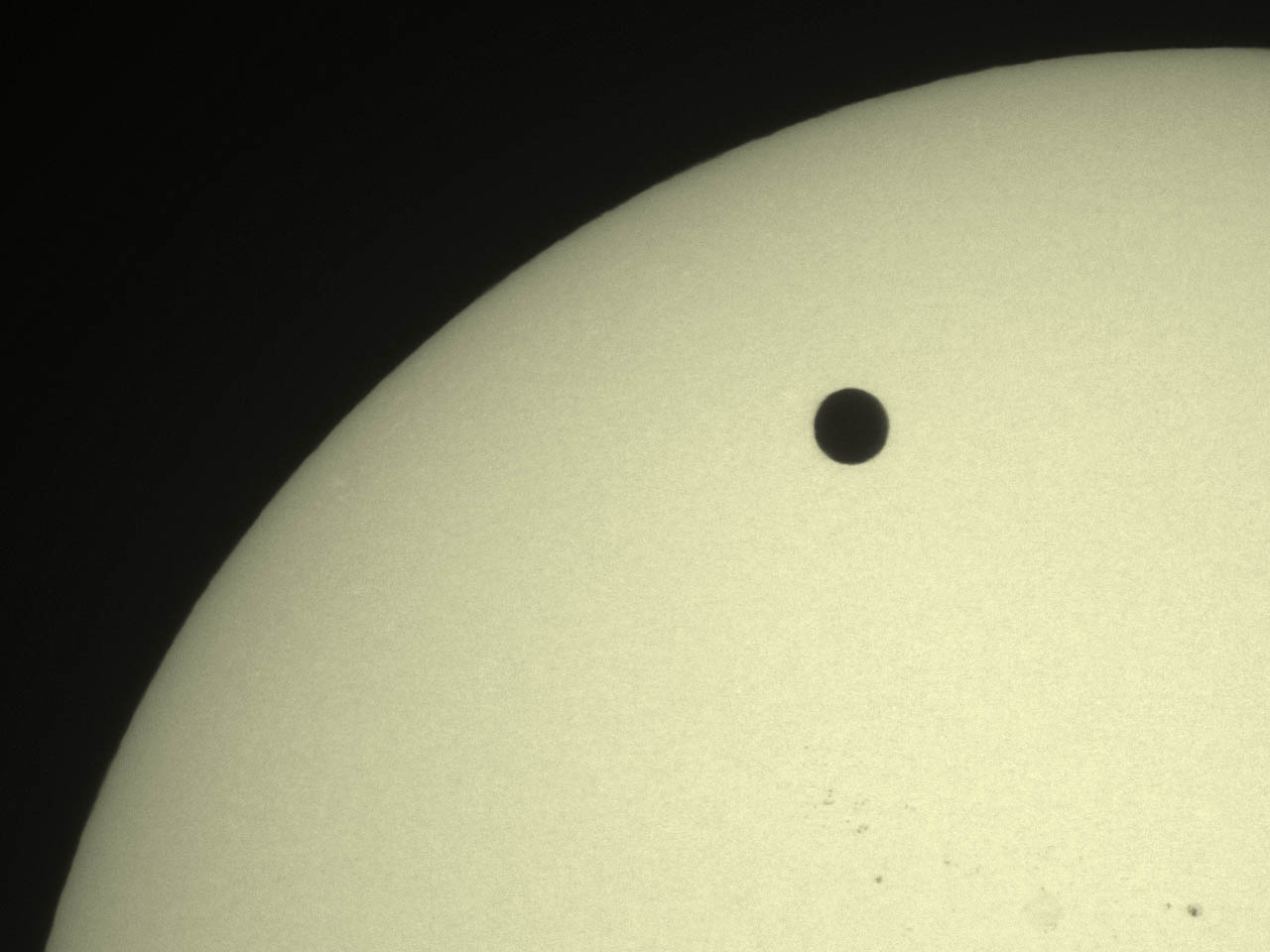
Image #0487, 16-33-52 PST Five minutes after the preceding image. Very sharp focus.
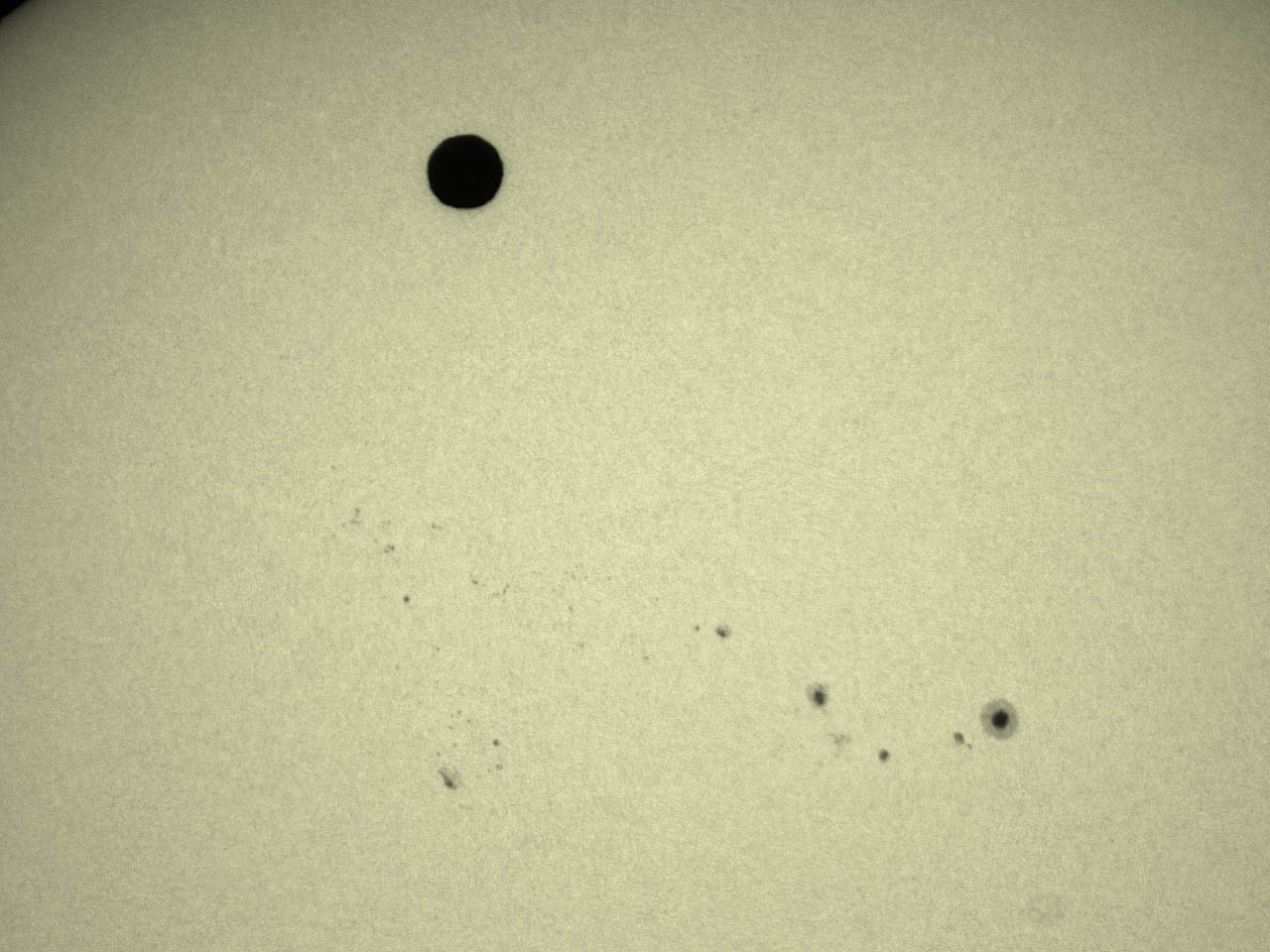
Image #0676, 16-51-33 PDT Venus and an active northern sunspot group.
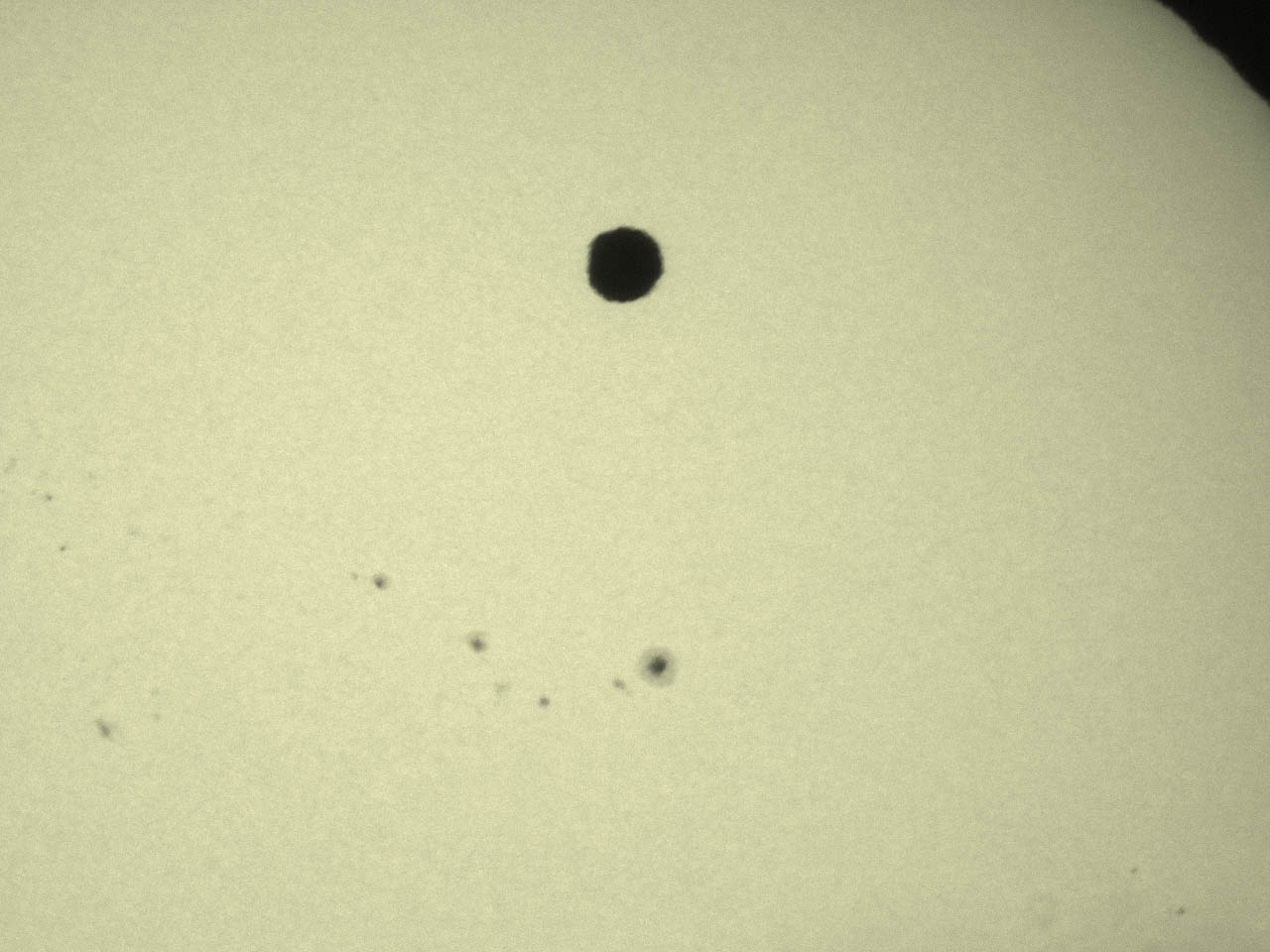
Image #0741, 18-36-48 PDT Last glimpse of the transit through a short gap in clouds. Terrible seeing; note the distorted image of Venus.
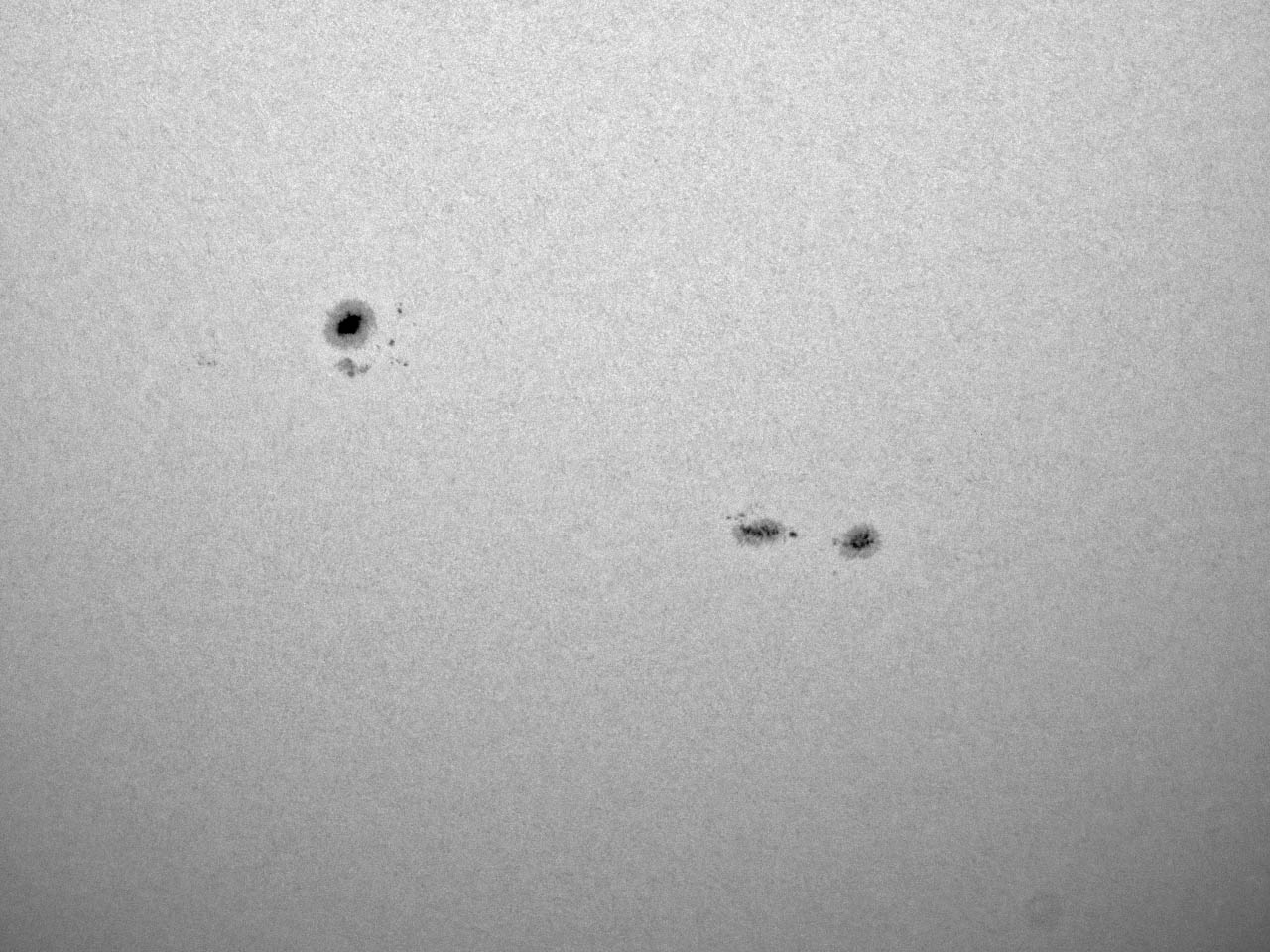
Image
#0528, 16-42-20 PDT The big sunspot in the Sun's southern
hemisphere.
This is one frame from a whole series; it may be possible to
derive a much sharper image by combining multiple images.
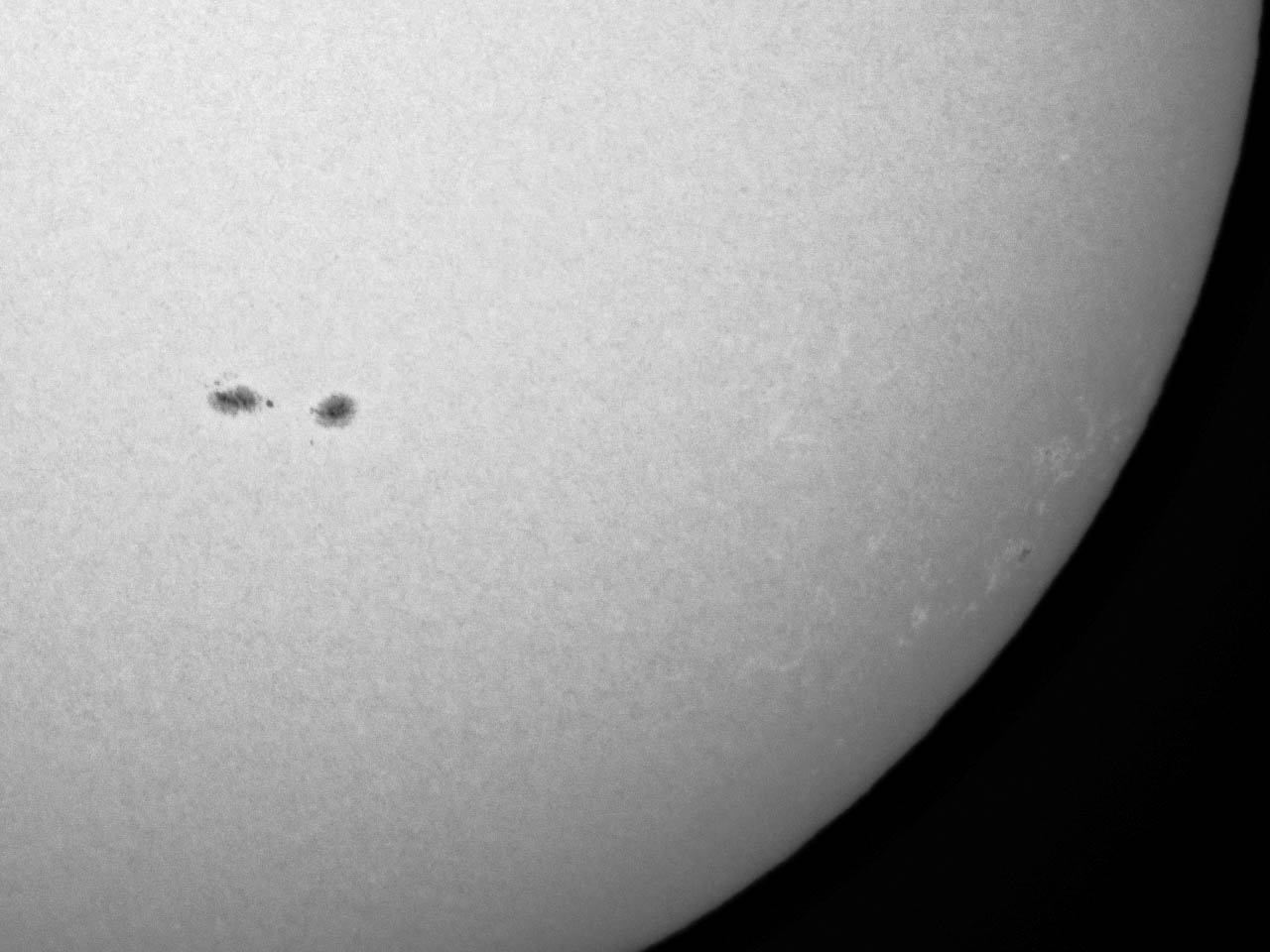
Image
#0694, 16-53-04 PDT Two spots seen in the preceding image and the
southwestern limb of the Sun,
showing bright photospheric faculae in the vicinity of a small
spot.
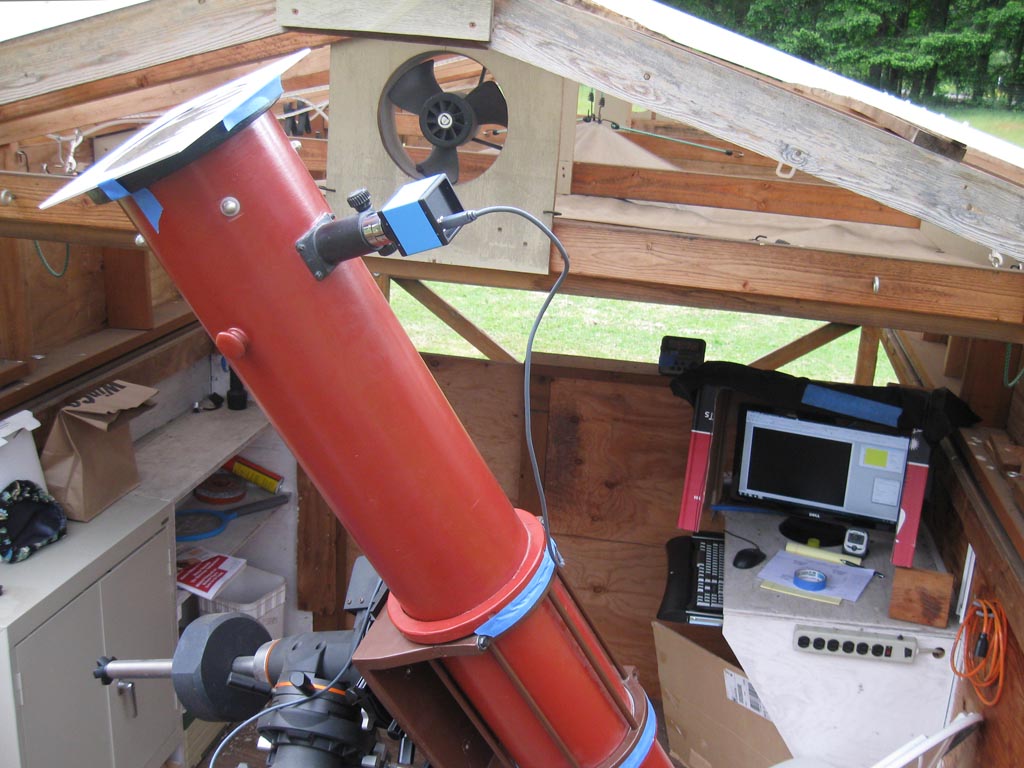
Here
is the overall setup. The telescope and camera were out under the
sky, but the computer and monitor
were under the roof (and stayed cool and dry). Because it is
difficult to see a monitor in bright sunlight,
the monitor is snuggled under and large cardboard box.
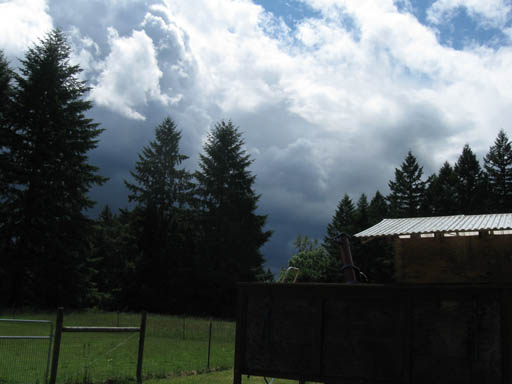
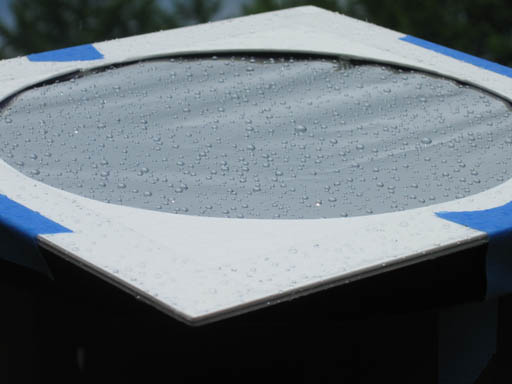
Half
an hour before first contact, I saw the storm appraoching from
the west. Right then I knew that
first contact was a goner. Right: Raindrops on the Baader solar
fiter.
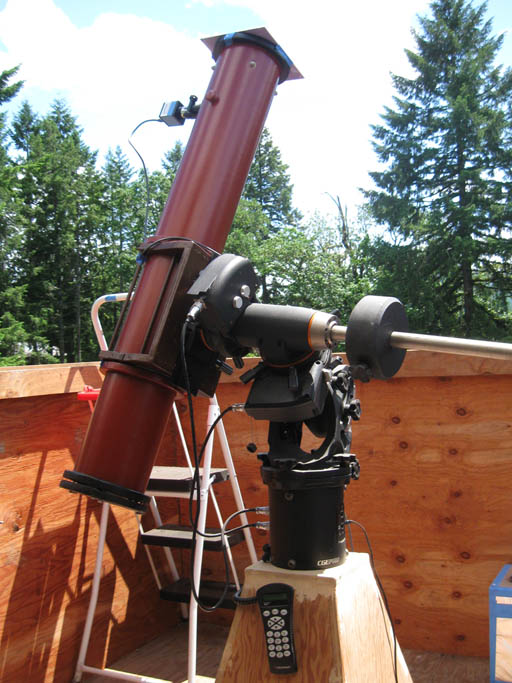
The telescope and CGE Pro mounting.

I always had an audience. This is Silverado, our silver-gray alpaca.
Return to Richard Berry's Home Page